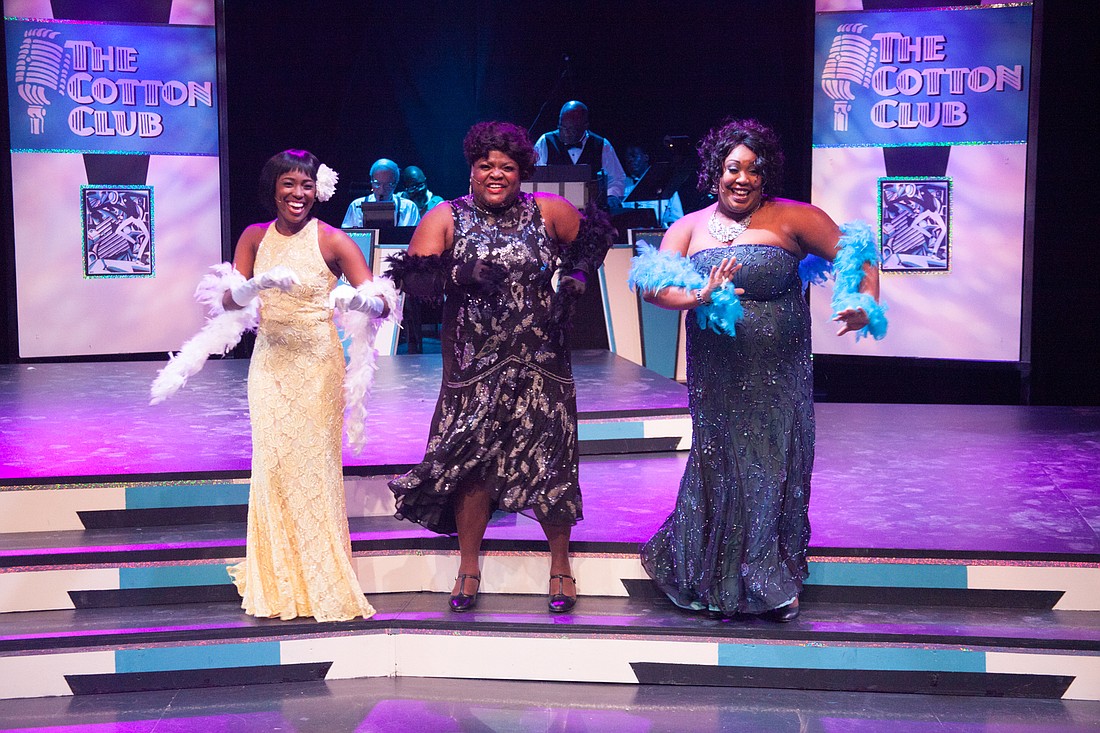- May 10, 2025
-
-
Loading

Loading

The Cotton Club was an incubator of talent in the Harlem of the 1920s and 1930s. The same can be said of the Westcoast Black Theatre Troupe in the Sarasota of the 2000s and 2010s. Fittingly, “The Cotton Club Cabaret” was the troupe’s first production — and the close of its 15th season as well.
Nate Jacobs’ original production is part feel-good revue, part history lesson. In case you missed the Francis Ford Coppola movie, the Cotton Club was a night club in the heart of Harlem (142nd St. and Lenox Ave., to be precise.) The club thrived during Prohibition — which ended in 1933, after which the club didn’t thrive so much. It moved uptown in 1936, and folded four years later. Gangsters owned it. Exploitation of African-American culture was the style. In the audience: whites only, with the exception of “high yellows” at lousy tables. On stage: your standard racist tropes from the cotton-picking stereotype implied by the club’s name to the white boy fantasy of Rousseau’s noble savage, transposed to the heart of darkest Africa. Sexy savages, in other words. “Jungle music.” You get the drift.
Without hitting you over the head, Jacobs reminds you of this uneasy legacy in the set-ups between bits. This revue is not, after all, a guilt trip. It’s a way of reclaiming — and owning — the musical legacy of Duke Ellington, Cab Calloway, Fats Waller, Ethel Waters and others. And what great music they left behind.
The versatile music director, LaTerry Butler, leads a nine-member cast; he also plays the keyboard in a three-piece band. The performers, to quote Nigel Tufnel, dial it up to 11. Dancers Terrell Alexander, Chakara Rosa and Joshua Thompson create a constantly shifting kaleidoscope of dance under Donald Frison’s sizzling choreography. Singers Ariel Blue, Shelton Brown, Tarra Conner Jones, Earley Dean, Charles Westley Lattimore Jr., and Marta McKinnon alternate between duets and group productions.
The show blasts to life with Waller’s “The Joint Is Jumping,” honors Ellington with “Take The ‘A’ Train,” gives the audience a sly wink with Calloway’s “Minnie the Moocher” (of “The Blues Brothers” fame), schools the audience on exploitation with the cringe-worthy “A Jig in the Jungle,” and closes with — what else? — a soul-stirring gospel number, Clara Ward’s “How I Got Over.” The joint was indeed jumping by that time. (Some audience members were ready to jump out of their seats.)
Jacobs lovingly directs the revue he created. The music he honors has lost none of its power. The musicians who created should not be forgotten. They won’t be — not if Nate Jacobs can help it.